Heritage: Monica Makes Sense and now she's written a book about growing up in Sheffield
and live on Freeview channel 276
Her first book is published this month and features stories of growing up in 1950s Sheffield. Bottle Green Knickers With Pockets refers to her PE kit and will stir fond memories for anyone aged in their 70s.
The title came as she pondered fashion, or the lack of it. "I was thinking about the clothes we used to wear and you could identify anyone of a certain age because the boys had V-neck tank tops made with leftover wool and grey knee-length socks with garters.
Advertisement
Hide AdAdvertisement
Hide Ad"For gym, we always wore bottle green knickers with pockets. The pockets were for your hanky and mothers were particular about you having one.”
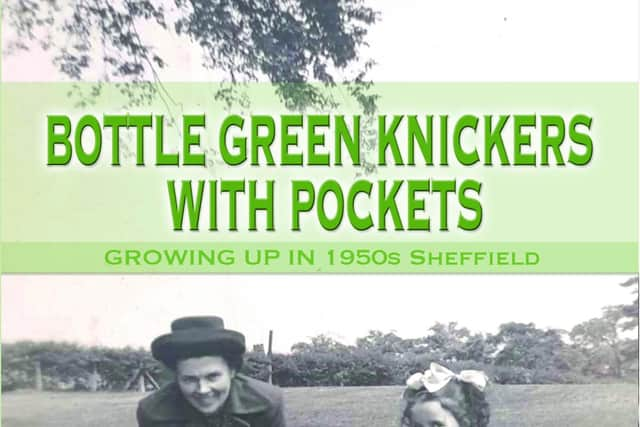

Published under her maiden name Monica Mary Morton, chapter titles capture the age - Make Do and Mend being one, Lipstick from Woolworths and Clothes from C&A is another.
You get the idea, this is a look back at an age radically different to 2022. “I have three grandsons and believe family history should be preserved,” she says, outlining her reason for writing the book. "So much gets lost in Facebook clouds, no-one has photo albums and if you don’t have them, you don’t know.”
So what do we know about the author outside her role as a Star columnist? "I grew up in Sheffield Lane Top after being born in what we called Lower Shiregreen,” she says. "My parents moved when I was young.”
Advertisement
Hide AdAdvertisement
Hide AdHer dad was Ernest Morton, a metallurgist who worked with Harry Brearley, the man who invented stainless steel. He went on to be an insurance agent. Her mum was Rose Conlan, who came to Sheffield from Ireland to work as a nurse.
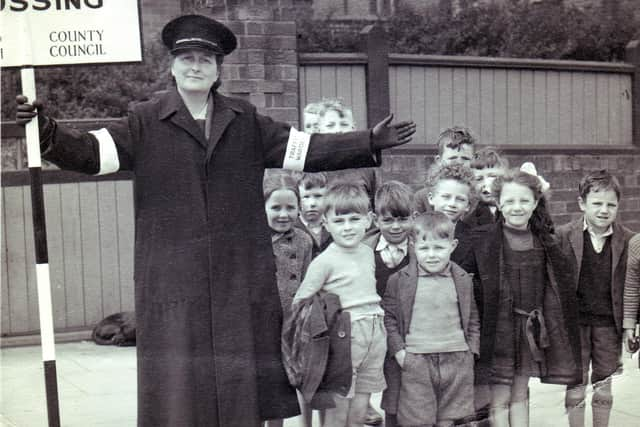

Ernest was 47, Rose was 22 and that is another story for a second book which will come out later this year. Like all good writers, Monica, who now lives in Wadsley and is aged 79, has lots of tales to tell.
She went to school at St Patrick’s RC primary school in Sheffield Lane Top before passing the 11-plus and going to Notre Dame. One of two girls, the trip to the Ranmoor school was an adventure.
"You got on the tram at Lane Top, then on a bus in the city centre and off you went. We didn’t think too much about it, we had a free bus pass and it was a bit of an adventure.
Advertisement
Hide AdAdvertisement
Hide Ad"The school was like another world. It was the first time I realised children had different backgrounds to me, they had big houses, some even had horses. We lived in a council house.”
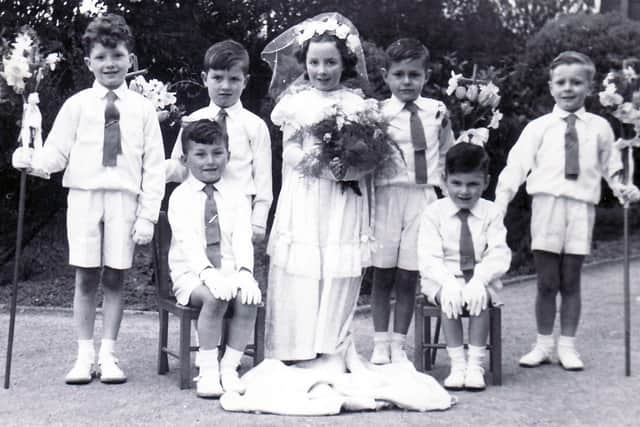

After finishing school at 16, Monica was stuck for what to do next. “There was no careers advice so my father knew someone in a steel works and got me a job in the office.”
Her first day was hit by tragedy. “I came home to find my dad had died,” she says. With sister Eileen, they pulled together and Monica ended up working in libraries, starting at the former City Polytechnic library. "By that time, I was married with two children and we’d got the 1970s.” She was married to Pete, with a daughter Kate and son Daniel.
She went onto work in Firth Park Community Library, then the Legal and Admin department in the Town Hall and after officially retiring, becoming information manager at the Sheffield Gypsy and Traveller Support Group.
Advertisement
Hide AdAdvertisement
Hide AdAll a long way from Monica Mary Morton and those days in the 1950s. She has tried to be comprehensive. "I cover all aspects of life,” says Monica, reeling them off. “Eating out, The Star Walk, Whit Sings, holidays in a caravan, the phone box at the end of the road, hobbies, radio and Tv and Saturday cinema shows.”
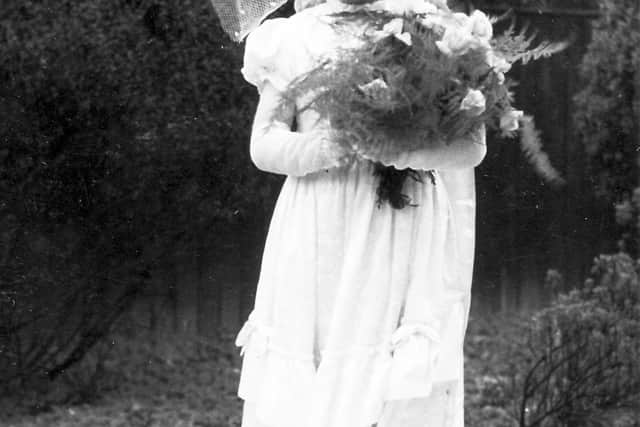

She also covers sex education in a convent grammar school, the music scene and confession. Contrast that to shopping. "There was an elegant town centre with Cockaynes and John Walsh department stores,” Monica adds.
“People used to call at your door, starting with the milkman, then the postman, the rag and bone man and a man selling the Enyclopaedia Britannica. He said if we didn’t buy it, we’d never pass the 11-plus. He was wrong!”
Then there a man who she refers to as The Sheikh with the Suitcase. He wore a turban and remained a mystery to Monica. “I’d never seen anything like it. It was always a brown suitcase and he had men’s ties and socks. We didn’t know where he came from or went to.”
Advertisement
Hide AdAdvertisement
Hide AdSo was this a golden age? “We like to think it was a better time, but today there is wonderful health care and the internet has changed learning,” says Monica.
"People say the ’50s was a much gentler time, you didn’t have to lock your doors, but it was a time when you knew so little. Your information came mostly from news reels at the cinema or newspapers.
"It was a time of innocence. There were places we knew nothing of, the same goes for the dark side of sexism and racism. I rarely saw a black person. It was a limited outlook.”
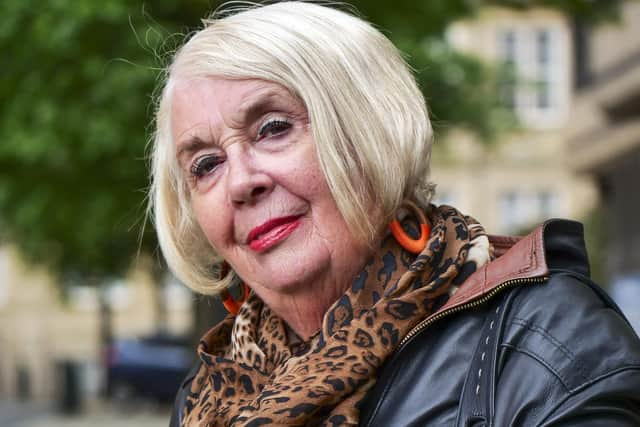

As a columnist, she has covered some of these themes. “A time when no-one had fitted carpets, renovating houses when dad took all the picture rails down, modernised everything and smashed up a grand piano. I’ve covered that,” she says.
Advertisement
Hide AdAdvertisement
Hide Ad" I don’t necessarily think it was the good old days. There were good days and there are problems now, with people living on the breadline, but we knew so little in the 1950s. There wasn’t the opportunities that people have today – no travel, no cars, no Tv or computers. Some people might say that’s great, you’re better off without it, but I don’t think so.”
As forthright as you would expect from a Star columnist. Her first was published on January 16, 2010, with the headline We are retired from work but still full of life. She’s since served three editors and thanks them for the chance to write.
Her favourite column had the headline My love affair with my lippy, from August 2013. “Because my husband says I don't even go to the bin without my lipstick,” she says.
Monica has observed much change in Sheffield city centre and has strong views. “It is a bit of a mess,” she says. “I’m horrified by Fargate and the High Street. We’re going to have shipping containers outside the Town Hall.
Advertisement
Hide AdAdvertisement
Hide Ad"I bemoan the beautiful building we once had like the Town Hall chambers in Barkers Pool. Things are lying in ruin and become piles of rubble.
"Look at Liverpool where where historic buildings become restaurants. Since the 1960s there has been no city centre planning in Sheffield, just indiscriminate demolition of buildings.
"Do people want to eat in a cutlery works which looks like a canteen? Still, maybe I shouldn’t criticise because no doubt the best is being done with the resources available, but when I go to other cities I think what a shame Sheffield is what it is.”
No doubt some will agree, others will differ and this is what Monica does – she provokes a reaction. Take her view on being called a pensioner. “It’s bad enough being old without it being confirmed, especially when you often look at the photograph of them and think ‘Crikey, she’s 10 years younger than me,” she wrote in her column.
Advertisement
Hide AdAdvertisement
Hide Ad"It often seems that we are the generation that gets called the most names, printable ones at that .
“We are officially a pensioner, but we can be a senior citizen, old timer, old fogey, old codger or even old fart, although that is usually in the case of men!
“We were once called old age pensioners but that was phased out some time ago and is not now considered politically correct – especially as we are often told that 60 is now the new 40, no doubt thought up by someone many years away from being 60.
“In America you could be called oldster, senior, retiree, elder or veteran.
Advertisement
Hide AdAdvertisement
Hide Ad“I don’t think young people today will use the terms which have been traditional with previous generations.”
Her final thought was: “At the end of the day, does it really matter? Recent events have made us realise what is really important, and I think we are all grateful to be getting through each day unscathed.
“I don’t really mind being called a pensioner. I just do not want to be thought of as a clone of every other retired person but as an individual.
“Not that I like being called ‘old’, as I do think that is a term to denote someone elderly, frail, decrepit or over the hill. Chronological age should not be assumed to imply incapability.”
Advertisement
Hide AdAdvertisement
Hide AdFor more of this, buy a copy of the book by emailing Monica and she will discuss a price. It is part of an experiment to see how best to sell it. Nothing, if not unconventional.
Her email is [email protected] and the book is published in association with ACM Retro.
